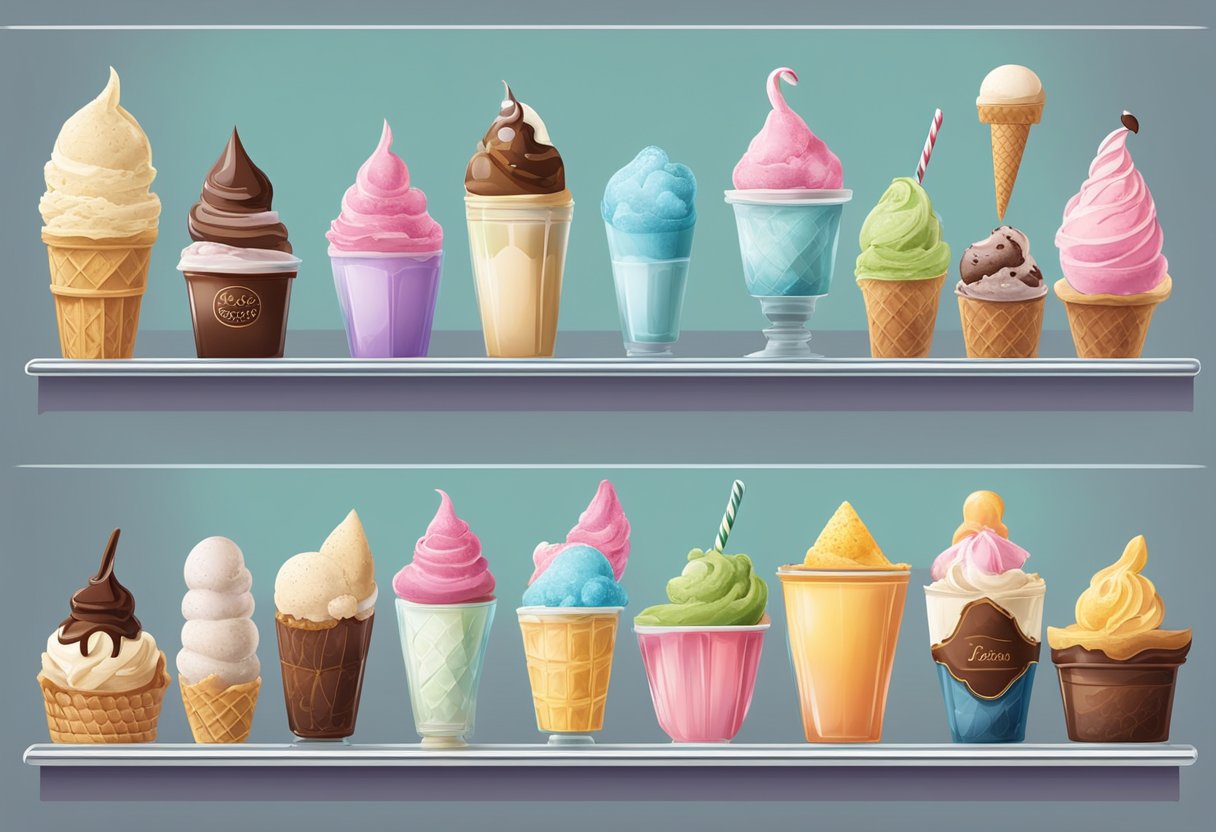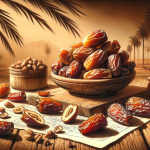Types Of Ice Cream
Ice cream is a popular frozen dessert enjoyed by people of all ages around the world. It is a treat that is often associated with summer and is available in a wide range of flavors and styles. From classic vanilla to exotic flavors like green tea and halva, there is an ice cream flavor for everyone.
The history and origins of ice cream can be traced back to ancient China, where a mixture of milk and rice was frozen in snow. Over time, the recipe evolved and spread to other parts of the world, including Europe and the United States. Today, ice cream is a multi-billion dollar industry that continues to innovate and expand with new flavors and styles.
Key Takeaways
- Ice cream is a popular frozen dessert enjoyed around the world.
- The history and origins of ice cream can be traced back to ancient China.
- Today, ice cream is a multi-billion dollar industry that continues to innovate and expand with new flavors and styles.
History and Origins

Ice cream is a frozen dessert that is enjoyed all over the world. It is believed to have originated in China, where frozen milk was mixed with rice and then frozen. However, the exact origins of ice cream are still unclear, and there are several myths surrounding its creation.
Evolution of Ice Cream
Ice cream has come a long way since its humble beginnings. In the 13th century, Marco Polo is said to have brought the recipe for a frozen dessert back to Italy from China. It wasn’t until the 16th century that ice cream became popular in Europe, where it was made by mixing cream, sugar, and fruit.
In the 17th century, ice cream was introduced to America, where it quickly became a popular treat. It wasn’t until the 19th century that ice cream became widely available, thanks to the invention of the ice cream churn and the development of refrigeration technology.
Today, there are many different types of ice cream, including sherbet, gelato, kulfi, and dondurma. Each type of ice cream has its own unique flavor and texture, and is enjoyed by people all over the world.
Global Influence
Ice cream has become a global phenomenon, with many different countries putting their own spin on the dessert. In Italy, gelato is a popular frozen treat made with milk, sugar, and flavorings. In India, kulfi is a frozen dessert made with milk, sugar, and pistachios. In Turkey, dondurma is a dense, chewy ice cream that is made with salep, a type of flour made from orchid tubers.
Ice cream has become a staple dessert all over the world, and its popularity shows no signs of slowing down. With so many different types of ice cream to choose from, there is something for everyone to enjoy.
Types of Ice Cream
Ice cream is a beloved dessert enjoyed by people all over the world. With so many different types of ice cream available, it can be overwhelming to choose just one. In this section, we will explore some of the most popular types of ice cream, including classic flavors, regional specialties, and novelty ice creams.
Classic Flavors
Classic flavors of ice cream are those that have been around for decades and are still popular today. These flavors include chocolate, vanilla, and strawberry. Chocolate ice cream is made by adding cocoa powder or melted chocolate to a vanilla ice cream base. Vanilla ice cream is made by infusing cream with vanilla beans, while strawberry ice cream is made by adding pureed strawberries to a vanilla ice cream base.
Regional Specialties
Regional specialties are types of ice cream that are unique to a particular area. For example, in Italy, gelato is a popular type of ice cream that is made with whole milk instead of cream and contains no eggs. It has a denser, creamier texture than traditional American ice cream. In Japan, green tea ice cream is a popular dessert that is made with matcha powder, giving it a distinctive green color and a slightly bitter taste.
Novelty Ice Creams
Novelty ice creams are types of ice cream that are designed to be fun and unique. One example is Neapolitan ice cream, which features three different flavors – chocolate, vanilla, and strawberry – in one container. Another example is mochi ice cream, which is a Japanese dessert made by wrapping balls of ice cream in sweet rice dough. Vegan ice cream is also becoming more popular, with many different flavors available that are made with non-dairy milk such as almond or coconut milk.
In addition to these types of ice cream, there are many other flavors and varieties available, including sorbet, Italian ice, and more. No matter what your taste preferences are, there is sure to be a type of ice cream that you will enjoy.
Ingredients and Production
Basic Components
Ice cream is a frozen dessert that is made by blending milk, cream, sugar, and flavorings. The basic components of ice cream are dairy products, sweeteners, and flavorings. Milk and cream are the main dairy products used in ice cream production. Sugar is used to sweeten the mix, and stabilizers and emulsifiers are added to give the ice cream the desired body and mouthfeel.
Custard Base Varieties
There are two main types of ice cream bases: custard-based and non-custard-based. Custard-based ice cream is made by cooking a mixture of milk, cream, sugar, and egg yolks until it thickens. This mixture is then cooled and churned in an ice cream maker. Non-custard-based ice cream is made by blending milk, cream, sugar, and flavorings without cooking.
Artisanal vs. Industrial
Artisanal ice cream is made by hand in small batches using high-quality ingredients. This type of ice cream often has a higher fat content and a denser texture than industrial ice cream. Industrial ice cream is made in large batches using commercial equipment. This type of ice cream often has a lower fat content and a lighter texture than artisanal ice cream.
In both artisanal and industrial ice cream production, air is added during the churning process to increase the volume of the ice cream. The amount of air added is known as the overrun. Artisanal ice cream typically has a lower overrun than industrial ice cream, which gives it a denser texture.
Overall, the ingredients and production process used in ice cream production can vary depending on the type of ice cream being made. However, the basic components of dairy products, sweeteners, and flavorings remain the same.
Nutritional Information
Ice cream is a delicious and popular dessert that comes in many different flavors and varieties. However, it is important to be aware of the nutritional content of ice cream to make informed choices about what to consume. In this section, we will discuss the caloric content and dietary variations of ice cream.
Caloric Content
Ice cream is typically high in calories, fat, and sugar. A 1/2-cup serving of vanilla ice cream can contain anywhere from 130 to 250 calories, depending on the brand and type. Premium ice cream, which is processed to be denser and creamier, tends to have a higher calorie content than regular ice cream.
In terms of fat content, ice cream can contain anywhere from 7 to 20 grams of fat per 1/2-cup serving. Saturated fat is the type of fat that is most commonly found in ice cream, and it is important to monitor your intake of saturated fat to maintain good health.
Ice cream is also high in sugar, with a 1/2-cup serving containing anywhere from 13 to 30 grams of sugar. Consuming too much sugar can lead to health problems such as obesity, diabetes, and heart disease.
Dietary Variations
For those who are looking for a healthier alternative to traditional ice cream, there are many options available. Frozen yogurt is a popular alternative that is lower in fat and calories than ice cream. It is made with yogurt instead of cream, which reduces the fat content.
Vegan ice cream is another option for those who are looking for a dairy-free alternative. It is made with non-dairy milk such as almond, soy, or coconut milk, and is typically lower in fat and calories than regular ice cream.
Overall, it is important to be aware of the nutritional content of ice cream and to make informed choices about what to consume. By monitoring your intake of calories, fat, and sugar, and by choosing healthier alternatives such as frozen yogurt or vegan ice cream, you can enjoy this delicious treat without compromising your health.
Serving and Consumption
Presentation Styles
Ice cream can be presented in a variety of ways, depending on the type of ice cream and the occasion. Soft serve is commonly served in a cone or cup, while rolled ice cream is often presented in a cup with toppings added on top. Frozen custard is often served in a cup or cone, and popsicles come on a stick. Ice cream bars are also a popular option, usually presented on a stick or in a wrapper.
Pairings and Toppings
Ice cream can be paired with a variety of toppings to enhance its flavor and texture. Whipped cream, chocolate sauce, caramel sauce, and fruit are popular toppings for ice cream. Sprinkles, nuts, and candy pieces can also be added for extra crunch and sweetness.
When it comes to pairings, ice cream can be served with a variety of desserts such as cake, pie, or brownies. It can also be paired with drinks such as coffee or hot chocolate. Some people even enjoy pairing ice cream with salty snacks such as potato chips or pretzels for a sweet and salty flavor combination.
Overall, ice cream is a versatile dessert that can be presented and paired in many ways to suit different tastes and occasions.
Cultural and Economic Impact
Ice Cream in Popular Culture
Ice cream has become an integral part of popular culture in many countries around the world, including the United States, Japan, Italy, and Turkey. It is often associated with summer, and is considered a perfect snack to beat the heat. In the United States, ice cream is a staple dessert and is enjoyed by people of all ages, while in Japan it is often served with sweetened red beans and mochi. In Italy, gelato is a popular frozen dessert made with fresh fruit and cream, while in Turkey, ice cream is often made with salep and mastic, giving it a unique flavor and texture.
Ice cream has also made its way into various forms of media, including movies, TV shows, and music. For instance, the song “Ice Cream” by BLACKPINK and Selena Gomez has become a hit, with over 500 million views on YouTube. In the movie Forrest Gump, the character Bubba Blue famously rattles off a list of different shrimp dishes, including shrimp gumbo, shrimp creole, and shrimp scampi, before ending with “that’s about it.” Similarly, ice cream has been featured in various forms in popular culture, from ice cream cones to ice cream sandwiches.
Market Trends and Industry
The ice cream industry is a multi-billion dollar industry that has seen significant growth over the years. According to a report by IBISWorld, the ice cream production industry in the United States generated $8.2 billion in revenue in 2021, with an annual growth rate of 3.6%. This growth can be attributed to the increasing demand for premium and artisanal ice cream, as well as the popularity of non-dairy and vegan options.
Market trends have also shown that condensed milk is a popular ingredient in ice cream production, due to its sweet and creamy taste. In addition, various flavors and toppings have become popular in recent years, including matcha, black sesame, and mochi. The use of natural and organic ingredients has also become a selling point for many ice cream brands, as consumers become more health-conscious.
Overall, the cultural and economic impact of ice cream is undeniable. From its popularity in popular culture to its significant presence in the market, ice cream has become a beloved treat enjoyed by people all over the world.






